|
3. Agile Testing Strategi
To understand how testing activities
fit into agile system development it is useful to look
at it from the point of view of the system delivery
lifecycle (SDLC). Figure 10 is a high-level view of
the agile SDLC, indicating the testing activities at
various SDLC phases. This section is organized into
the following topics:
从系统交付生命周期角度来看理解怎样的测试活动适应敏捷系统开发是很有用的,Figure10 是敏捷开发软件生命周期的高级视图,包括在生命周期各个阶段的测试活动,这段是按照下面进行组织:
Project initiation 项目初始
The whole team 整个团队
The independent test team 独立测试团队
Test environment setup 测试环境搭建
Development team testing 开发团队测试
Continuous integration 持续集成
Test-driven development (TDD) 测试驱动开发
Test-immediately after approach 立刻测试
Parallel independent testing 并行独立测试
Defect management 缺陷管理
End-of-lifecycle testing 生命周期结束测试
Who is doing this? 谁来做
Implications for test practitioners 测试人员的影响
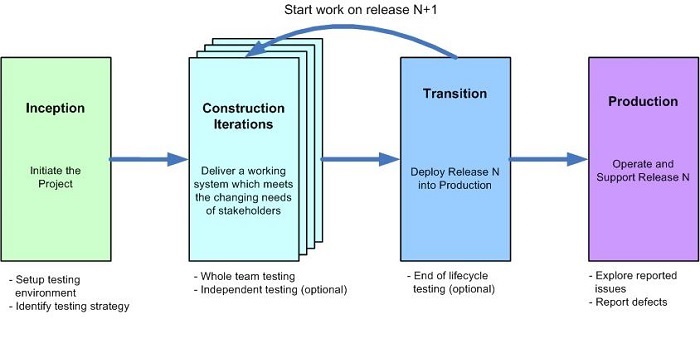
Figure 10. Testing throughout the SDLC.
3.1 Project Initiation
During project initiation, often called "Sprint
0" in Scrum or "Iteration 0" in other
agile methods, your goal is to get your team going in
the right direction. Although the mainstream agile community
doesn't like talking about this much, the reality is
that this phase can last anywhere from several hours
to several weeks depending on the nature of the project
and the culture of your organization. From the point
of view of testing the main tasks are to organize how
you will approach testing and start setting up your
testing environment if it doesn't already exist. During
this phase of your project you will be doing initialrequirements
envisioning (as described earlier) andarchitecture envisioning.
As the result of that effort you should gain a better
understanding of the scope, whether your project must
comply to external regulations such as the Sarbanes-Oxley
act or the FDA's CFR 21 Part 11 guidelines, and potentially
some some high-level acceptance criteria for your system
-- all of this is important information which should
help you to decide how much testing you will need to
do. It is important to remember that one process size
does not fit all, and that different project teams will
have different approaches to testing because they find
themselves in different situations -- the more complex
the situation, the more complex the approach to testing
(amongst other things). Teams finding themselves in
simple situations may find that a "whole team"
approach to testing will be sufficient, whereas teams
in more complex situations will also find that they
need anindependent test team working in parallel to
the development team. Regardless, there's always going
to be some effort setting up yourtest environment.
在项目初始(启动),scrum中经常叫做“Spring 0” 或者在其他敏捷方法中叫 “迭代 0” ,
你的目标是获得团队的正确方向,尽管主流的敏捷社区不太多的谈论这个,事实上这个阶段可能持续几个小时到几个星期,这依赖于项目性质和你们的组织文化。
站在测试的视角来看主要任务是组织测试方法和开始搭建测试环境 。通过这个阶段,你们将做需求构想和架构构想。
3.1.1 The "Whole Team" Organizational
Strategy
An organizational strategy common in the agile community,
popularized by Kent Beck inExtreme Programming Explained
2nd Ed, is for the team to include the right people
so that they have the skills and perspectives required
for the team to succeed. To successfully deliver a working
system on a regular basis, the team will need to include
people with analysis skills, design skills, programming
skills, leadership skills, and yes, even people with
testing skills. Obviously this isn't a complete list
of skills required by the team, nor does it imply that
everyone on the team has all of these skills. Furthermore,
everyone on an agile team contributes in any way that
they can, thereby increasing the overall productivity
of the team. This strategy is called "whole team".
在敏捷社区组中普遍的,被推广的组织策略是,敏捷团队里要有合适的人,这样他们的技能和观点能够帮助团队获得成功,能够定期的成功地交付系统。,团队里需要有包括分析技能、设计技能、编程技能,领导能力,甚至测试技能的人。显然这不是一个完整的团队人员能力列表,也不意味着团队中的每个人都有这些技能。此外,每个人都在一个敏捷团队通过任何方式作出他力所能及的贡献,从而提供团队能整理生产力。这种策略叫做“整个团队”。
With a whole team approach testers are “embedded” in
the development team and actively participate in all
aspects of the project. Agile teams are moving away
from the traditional approach where someone has a single
specialty that they focus on -- for example Sally just
does programming, Sanjiv just does architecture, and
John just does testing -- to an approach where people
strive to become generalizing specialists with a wider
range of skills. So, Sally, Sanjiv, and John will all
be willing to be involved with programming, architecture,
and testing activities and more importantly will be
willing to work together and to learn from one another
to become better over time. Sally's strengths may still
lie in programming, Sanjiv's in architecture, and John's
in testing, but that won't be the only things that they'll
do on the agile team. If Sally, Sanjiv, and John are
new to agile and are currently only specialists that's
ok, by adopting non-solo development practices and working
in short feedback cycles they will quickly pick up new
skills from their teammates (and transfer their existing
skills to their teammates too).
在“整个团队”方法中,测试人员被嵌入到开发团队并且积极参与项目的方方面面的活动。 敏捷团度正远离传统方法中单人单责的工作方法。
例如Slly 仅是一个成员,Sanjiv 只做架构 另外 John 仅作测试。敏捷团队中让每一个人变成具有广泛技能的通才。
那么 Sally,Sanjiv 和john 将一起作开发,架构,测试活动和很多重要工作。从别人那里不断的学习,不断地提高。
Sally 可能擅长在代码上,Sanjiv 擅长在架构上,john擅长在测试上。但是这些不是他们在敏捷团队中仅仅要做的工作,如果Sally
Sanjiv 和John在敏捷方面都是新手,目前仅有专家,没关系,通过采用non-solo 开发实践和短周期反馈工作方法,他们将从他们的队友中快速获得新的技术(也转移他们自己的技术给其他队友)。
This approach can be significantly different than what
traditional teams are used to. On traditional teams
it is common for programmers (specialists) to write
code and then "throw it over the wall" to
testers (also specialists) who then test it an report
suspected defects back to the programmers. Although
better than no testing at all, this often proves to
be a costly and time consuming strategy due to the hand-offs
between the two groups of specialists. On agile teams
programmers and testers work side-by-side, and over
time the distinction between these two roles blur into
the single role of developer. An interesting philosophy
in the agile community is that real IT professionals
should validate their own work to the best of their
ability, and to strive to get better at doing so over
time.
这个方法与传统团队用的方法明显不同,在传统团队里通常是程序员写代码,并且通过流水线给测试人员,测试人员执行测试,报告缺陷反馈给程序员,尽管比没有测试好,但是这也证明在两个专门团队间传递的策略是一个昂贵的和费时的方法。
在敏捷团队中程序员和测试人员并肩工作,随着时间的推移,两个角色的差别变得模糊,最后变成只有一个开发角色。
在敏捷开发社区中有一个有趣的哲学,真正的it专业人才最好的能力是炎症自己的工作,并且努力随着时间推移做得更好。
The whole team strategy isn't perfect, and there are
several potential problems:
整个团队策略不是完美的,有以下几个潜在的问题:
Group think. Whole teams, just like any other type
of team, can suffer from what's known as "group
think". The basic issue is that because members
of the team are working closely together, something
that agile teams strive to do, they begin to think alike
and as a result will become blind to some problems that
they face. For example, the system that your team is
working on could have some significant usability problems
in it but nobody on the team is aware of them because
either nobody on the team had usability skills to begin
with or the team decided to mistakenly downplay usability
concerns at some point and team members have forgotten
that happened.
集体思维:整个团队,就像其他类型的团队,会遇到所谓的集体思维,基本的问题是,因为团队成员密切合作在一起,敏捷团队努力做的事情,他们开始觉得相似,因此会忽视一些他们所面临的问题。例如,您的团队正在做的的系统中可能会有一些重要的可用性问题,但团队中没有人也意识到他们,因为在开始团队里没有人有可用性机能
或者团队决定错误地淡化可用性在某种程度上和团队成员已经忘记担心的事情发生了。
The team may not actually have the skills it needs.
It's pretty easy to declare that you're following the
"whole team" strategy but not so easy to actually
do so sometimes. Some people may overestimate their
skills, or underestimate what skills are actually needed,
and thereby put the team at risk. For example, a common
weakness amongst programmers is database design skills
due to lack of training in such skills, over specialization
within organizations where "data professionals"
focus on data skills and programmers do not, and a cultural
impedance mismatch between developers and data professionals
which makes it difficult to pick up data skills. Worse
yet, database encapsulation strategies such as object-relational
mapping frameworks such as Hibernate motivate these
"data-challenged" programmers to believe that
they don't need to know anything about database design
because they've encapsulated access to it. So, the individual
team members believe that they have the skills to get
the job done yet in fact they do not, and in this case
the system will suffer because the team doesn't have
the skills to design and use the database appropriately.
团队可能没有所需要的技能: 整个团队策略说起来容易,做起来难。 有些人高估了自己的技能 或者低估了实际需要的技能,这些都带给团队风险。例如
程序员中一个通常的弱点是由于缺少相关培训缺乏数据库设计技巧,在专业的组织里有数据专家关注数据技能 ,程序员是不作这些工作的。程序员和数据专家之间的文化障碍使得程序员很难去捡起这项技能。
更糟糕的,数据据库封装策略 就像关系对象Map 框架 ,就像hibernate框架技术使得这些程序员相信他们不需要知道关于数据库设计的任何事情,因为他们已经被封装好了。
所以 独立的团队程砚详细他们有技能去完成这个工作,但事实上他们做不了。 在这个案例中因为团队没有设计和使用数据库的技术而困苦。
The team may not know what skills are needed. Even
worse, the team may be oblivious to what skills are
actually needed. For example, the system could have
some very significant security requirements but if the
team didn't know that security was likely to be a concern
then they could miss those requirements completely,
or misunderstand them, and inadvertently put the project
at risk.
团队可能不知道那些技能被需要,更糟糕的是 ,团队可能不知道实际中需要什么技术,例如一个系统有一些非常重大的安全需求,但是如果团队不知道安全可能是一个问题,而忽略了那些需求或者错误理解,从而导致项目风险。
Luckily the benefits of the whole team approach tend
to far outweigh the potential problems. First, whole
team appears to increase overall productivity by reducing
and often eliminating the wait time between programming
and testing inherent in traditional approaches. Second,
there is less need for paperwork such as detailed test
plans due to the lack of hand-offs between separate
teams. Third, programmers quickly start to learn testing
and quality skills from the testers and as a result
do better work to begin with -- when the developer knows
that they'll be actively involved with the testing effort
they are more motivated to write high-quality, testable
code to begin with.
幸运的是整个团队的方法的好处往往远远大于潜在的问题。首先,整个团队策略通过减少和消除编程和测试的等待时间从而增加了整体生产力。第二,由于不存在独立的团队之间的交接,从而减少文档工作
例如详细测试计划。第三,程序员从测试人员那里迅速开始学习测试和质量技能,结果就是-当开发人员知道他们会积极参与测试工作更积极写高质量、可测试的代码。
3.1.2 The Independent Test Team (Advanced
Strategy) 独立的测试团队(高级策略)
The whole team approach works well in practice when
agile development teams find themselves in reasonably
straightforward situations. However, when the environment
is complex, either because the problem domain itself
is inherently complex, the system is large (often the
result of supporting a complex domain), or it needs
to integrate into your overall infrastructure which
includes a myriad of other systems, then a whole team
approach to testing proves insufficient. Teams in complex
environments, as well as teams which find themselves
in regulatory compliance situations, will often discover
that they need to supplement their whole team with an
independent test team. This test team will performparallel
independent testing throughout the project and will
typically be responsible for theend-of-lifecycle testing
performed during therelease/transition phase of the
project. The goal of these efforts is to find out where
the system breaks (whole team testing often focuses
on confirmatory testing which shows that the system
works) and report such breakages to the development
team so that they can fix them. This independent test
team will focus on more complex forms of testing which
are typically beyond the ability of the "whole
team" to perform on their own, more on this later.
Your independent test team will support multiple project
teams. Most organizations have many development teams
working in parallel, often dozens of teams and sometimes
even hundreds, so you can achieve economies of scale
by having an independent test team support many development
teams. This allows you to minimize the number of testing
tool licenses that you need, share expensive hardware
environments, and enable testing specialists (such people
experienced in usability testing or investigative testing)
to support many teams.
It's important to note that an agile independent test
team works significantly differently than a traditional
independent test team. The agile independent test team
focuses on a small minority of the testing effort, the
hardest part of it, while the development team does
the majority of the testing grunt work. With a traditional
approach the test team would often do both the grunt
work as well as the complex forms of testing. To put
this in perspective, the ratio of people on agile developer
teams to people on the agile independent test team will
often be 15:1 or 20:1 whereas in the traditional world
these ratios are often closer to 3:1 or 1:1 (and in
regulatory environments may be 1:2 or more).
完整团队方法在简单的场景的敏捷开发团队中运作的比较好。然而,当环境复杂了,
3.1.3 Testing Environment Setup
At the beginning of your project you will need to start
setting up your environment, including setting up your
work area, your hardware, and your development tools
(to name a few things). You will naturally need to set
up your testing environment, from scratch if you don't
currently have such an environment available or through
tailoring an existing environment to meeting your needs.
There are several strategies which I typically suggest
when it comes to organizing your testing environment:
在项目开始时你需要开始搭建环境,包括你的工作区域,硬件,开发工具,你将自然的需要去搭建你的测试环境。
如果当前没有环境需要重头搭建或者通过调整现有环境来满足你的需求。 在组织测试环境时有如下几个策略:
Adopt open source software (OSS) tools for developers.
There are a lot of great OSS testing tools available,
such as thexUnit testing framework, which are targeted
at developers. These tools are often easy to install
and to learn how to use (although learning how to test
effectively proves to be another matter).
采用开源工具给开发者
Adopt commercial tools for independent testers. Because
your independent test team will often address more complex
testing issues, such as integration testing across multiple
systems (not just the single system that the development
team is focused on), security testing, usability testing,
and so on they will need testing tools which are sophisticated
enough to address these issues.
采用商业工具给独立的测试人员
Have a shared bug/defect tracking system. As you see
inFigure 2, and as I've mentioned in the previous section,
the independent test team will send defect reports back
to the development team, who in turn will often consider
thesedefect reports to be just another type of requirement.
The implication is that they need to have tooling support
to do this. When the team is small and co-located, as
we see atAgile Process Maturity Model (APMM) levels
1 and 2, this could conceivably be as simple as a stack
of index cards. In more complex environments you'll
need a software-based tool, ideally one that is used
to manage both the team's requirements as well as the
team's defects (or more importantly, their entire work
item list). More on this later.
有一个可以跟踪bug和缺陷的系统
Invest in testing hardware. Both the development team
and the independent team will need hardware on which
to do testing.
在测试硬件上投资
Invest in virtualization and test lab management tools.
Test hardware is expensive and there's never enough.
Virtualization software which enables you to load a
testing environment onto your hardware easily, as well
astest-lab management tools which enable you to track
hardware configurations, are critical to the success
of your independent test team (particularly if they're
support multiple development teams).
在虚拟化和测试实验室管理工具上投资
Invest in continuous integration (CI) and continuous
deployment (CD) tools. Not explicitly a category of
testing tool. but CI/CD tools are critical for agile
development teams because of practices such astest-driven
development (TDD), developer regression testing in general,
and the need to deploy working builds into independent
testing environments, demo environments, or even production.
Open source tools such asMaven and CruiseControl work
well in straightforward situations, although in more
complex situations (particularly at scale), you'll find
that you needcommercial CI/CD tools.
在持续集成和持续开发工具上投资
3.2 Development Team Testing Strategies
Agile development teams generally follow a whole team
strategy where people with testing skills are effectively
embedded into the development team and the team is responsible
for the majority of the testing. This strategy works
well for the majority of situations but when your environment
is more complex you'll find that you also need anindependent
test team working in parallel to the development and
potentially performingend-of-lifecycle testing as well.
Regardless of the situation, agile development teams
will adopt practices such as continuous integration
which enables them to do continuous regression testing,
either with atest-driven development (TDD) ortest-immediately
after approach.
敏捷开发团队通常遵循整个团队策略,开发团队要有测试技术并且团队是有责任承担主要测试工作。 这种策略适用大多数环境,但是在复杂环境中需要独立的测试团队来执行生命周期后面的测试工作。不论什么场景,敏捷开发团队需要采用这样的实践,例如持续集成能够是他们快速的持续回归测试,无论是在测试驱动开发或是方法后立即测试。
3.2.1 Continuous Integration (CI)
Continuous integration (CI) is a practice where at
least once every few hours, preferably more often, you
should:
持续集成是一个实践,至少在几个小时执行一次,最好是经常做下面工作:
Build your system. This includes both compiling your
code and potentially rebuilding your test database(s).
This sounds straightforward, but for large systems which
are composed of subsystems you need a strategy for how
you're going to build both the subsystems as well as
the overall system (you might only do a complete system
build once a night, or once a week for example, and
only build subsystems on a regular basis)
构建你的系统
Run your regression test suite(s). When the build is
successful the next step is to run your regression test
suite(s). Which suite(s) you run will be determined
by the scope of the build and the size of the system.
For small systems you'll likely have a single test suite
of all tests, but in more complex situations you will
have several test suites for performance reasons. For
example, if I am doing a build on my own workstation
then I will likely only run a subset of the tests which
validate the functionality that the team has been working
on lately (say for the past several iterations) as that
functionality is most likely to break and may even run
tests against "mock objects". Because I am
likely to run this test suite several times a day it
needs to run fast, preferably in less than 5 minutes
although some people will allow their developer test
suite to go up to ten minutes. Mock objects might be
used to simulate portions of the system which are expensive
to test, from a performance point of view, such as a
database or an external subsystem. If you're using mocks,
or if you're testing a portion of the functionality,
then you'll need one or more test suites of greater
scope. Minimally you'll need a test suite which runs
against the real system components, not mocks, and that
runs all your tests. If this test suite runs within
a few hours then it can be run nightly, if it takes
longer then you'll want to reorganize it again so that
very long-running tests are in another test suite which
runs irregularly. For example I know of one system which
has a long-running test suite which runs for several
months at a time in order to run complex load and availability
tests (something that anindependent test team is likely
to do).
执行回归测试
Perform static analysis. Static analysis is an quality
technique where an automated tool checks for defects
in the code, often looking for types of problems such
as security defects or coding style issues (to name
a few).
执行静态分析
Your integration job could run at specific times, perhaps
once an hour, or every time that someone checks in a
new version of a component (such as source code) which
is part of the build.
你的集成工作在特定实践运行,假定一个小时一次,每次都有些人提交了新的版本作为构建的一部分
Advanced teams, particularly those in an agility at
scale situation, will find that they also need to consider
continuous deployment as well. The basic idea is that
you automate the deployment of your working build, some
organizations refer to this as promotion of their working
build, into other environments on a regular basis. For
example, if you have a successful build at the end of
the week you might want to automatically deploy it to
a staging area so that it can be picked up forparallel
independent testing. Or if there's a working build at
the end of the day you might want to deploy it to a
demo environment so that people outside of your team
can see the progress that your team is making.
高级的团队,尤其那些有
3.2.2 Test-Driven Development (TDD)
Test-driven development (TDD) is an agile development
technique practice which combines:
测试驱动开发是一个敏捷开发技术实践:
Refactoring. Refactoring is a technique where you make
a small change to your existing source code or source
data to improve its design without changing its semantics.
Examples of refactorings include moving an operation
up the inheritance hierarchy and renaming an operation
in application source code; aligning fields and applying
a consistent font on user interfaces; and renaming a
column or splitting a table in a relational database.
When you first decide to work on a task you look at
the existing source and ask if it is the best design
possible to allow you to add the new functionality that
you're working on. If it is, then proceed with TFD.
If not, then invest the time to fix just the portions
of the code and data so that it is the best design possible
so as to improve the quality and thereby reduce your
technical debt over time.
重构:重构是一个技术,他通过对存在的代码或源数据调整来改善设计,但不改变原来功能。 重构的例子包括在应用程序源代码移动操作继承层次结构和重命名操作。
再用户界面调整字段和应用一致的字体; 在关系数据库中修改列名或表名。 在你决定沟沟一个存在的代码是需要考虑它是不是最好的设计,是否能允许你增加新的功能。
如果他是,则继续测试先行开发,如果不是需要投入一些时间去修改代码和数据以至于它成为最好的设计,改进质量和减少技术债务。
Test-first development (TFD). With TFD you write a
single test and then you write just enough software
to fulfill that test. The steps of test first development
(TFD) are overviewed in the UML activity diagram of
Figure 11. The first step is to quickly add a test,
basically just enough code to fail. Next you run your
tests, often the complete test suite although for sake
of speed you may decide to run only a subset, to ensure
that the new test does in fact fail. You then update
your functional code to make it pass the new tests.
The fourth step is to run your tests again. If they
fail you need to update your functional code and retest.
Once the tests pass the next step is to start over.
测试先行开发。 在测试先行开发中,你写一个测试 然后编写满足测试要求的软件(就是说现根据需求编写一个测试代码,在编写需求实现代码直到测试代码通过)。在Figure
11 UML活动图中描述了TFD的步骤。 第一步就是快速添加一个测试,基于现有代码执行失败, 下一步 你执行你的测试,经常由于速度原因一个完整的测试集中,你只运行一个子集。
去确认新的测试在实际中是失败的。然后你更新你的功能代码直到他通过测试。 ,第四步,在次运行测试,如果失败了,你需要修改你的功能代码并重新测试,一旦在下一步中测试通过了,则回到开始。

Figure11. The Steps of test-first development
(TFD).
There are two levels of TDD:
TDD有两个级别:
Acceptance TDD. You can do TDD at the requirements
level by writing a single customer test, the equivalent
of a function test or acceptance test in the traditional
world. Acceptance TDD is often called behavior-driven
development (BDD) or story test-driven development,
where you first automate a failing story test, then
driving the design via TDD until the story test passes
(a story test is a customer acceptance test).
验收TDD , 你可能通过编写单个客户测试在需求级别做TDD,相当于功能测试或者是传统的验收测试。验收TDD
经常被叫做行为驱动开发(BDD),或者故事测试驱动开发,你先编写一个故事自动化测试,第一次运行失败,然后驱动设计通过TDD直到故事测试通过(一个故事测试是一个客户验收测试)
---注:故事翻译怪怪的,叫用户场景测试可能好理解些。
Developer TDD. You can also do TDD at the design level
with developer tests.
开发TDD,你也能够在设计层面作TDD ,开发者测试。
With a test-driven development (TDD) approach your
tests effectively become detailed specifications which
are created on a just-in-time (JIT) basis. Like it or
not most programmers don’t read the written documentation
for a system, instead they prefer to work with the code.
And there’s nothing wrong with this. When trying to
understand a class or operation most programmers will
first look for sample code that already invokes it.
Well-written unit/developers tests do exactly this –
they provide a working specification of your functional
code – and as a result unit tests effectively become
a significant portion of your technical documentation.
Similarly,acceptance tests can form an important part
of your requirements documentation. This makes a lot
of sense when you stop and think about it. Your acceptance
tests define exactly what your stakeholders expect of
your system, therefore they specify your critical requirements.
The implication is that acceptance TDD is a JIT detailed
requirements specification technique and developer TDD
is a JIT detailed design specification technique. Writing
executable specifications is one of the best practices
of Agile Modeling.
在一个测试驱动开发方法中,你的测试效果变成了详细设计说明书。 大多数程序员不读系统文档,相反他们更喜欢读代码。
这并没有什么错误。 当试图理解一个类或操作时,大多数程序员首先会查找调用它的代码。编写良好的单元测试(或叫开发人员测试)正好做到了——提供工作规范的功能代码-,单元测试结果成为你的技术文档。同样
验收测试成为你的需求文档的重要部分。 当你停下来思考这是很有道理的。你的验收测试定义的正是涉众对系统的期望,因此他们指定了你界定的需求。意味着验收TDD是一个及时的需求说明书技术,开发TDD是一个及时的详细设计技术。编写一个可执行的需求是敏捷模型中的最佳实践。
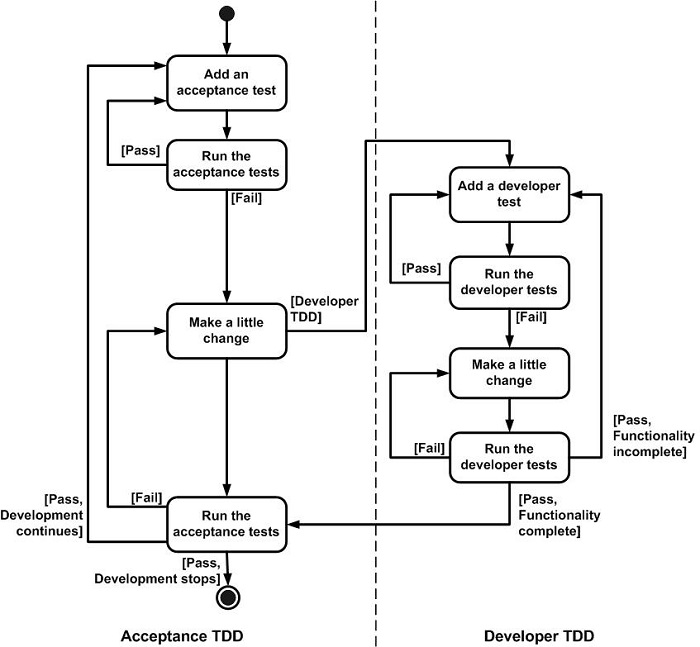
Figure 12. How ATDD and developer TDD
fit together.
With ATDD you are not required to also take a developer
TDD approach to implementing the production code although
the vast majority of teams doing ATDD also do developer
TDD. As you see inFigure 12, when you combine ATDD and
developer TDD the creation of a single acceptance test
in turn requires you to iterate several times through
the write a test, write production code, get it working
cycle at the developer TDD level. Clearly to make TDD
work you need to have one or more testingframeworks
available to you. For acceptance TDD people will use
tools such asFitnesse orRSpec and for developer TDD
agilesoftware developers often use the xUnit family
of open source tools, such as JUnitorVBUnit. Commercial
testing tools arealso viable options. Without suchtools
TDD is virtually impossible. The greatest challenge
with adopting ATDD is lack of skills amongst existing
requirements practitioners, yet another reason to promotegeneralizing
specialists within your organization over narrowly focused
specialists.
3.2.3 Test-Immediately After Approach
Although many agilists talk about TDD, the reality
is that there seems to be far more doing "test
after" development where they write some code and
then write one or more tests to validate. TDD requires
significant discipline, in fact it requires a level
of discipline found in few coders, particularly coders
which follow solo approaches to development instead
ofnon-solo approaches such as pair programming. Without
a pair keeping you honest, it's pretty easy to fall
back into the habit of writing production code before
writing testing code. If you write the tests very soon
after you write the production code, in other words
"test immediately after", it's pretty much
as good as TDD, the problem occurs when you write the
tests days or weeks later if at all.
The popularity of code coverage tools such asClover
andJester amongst agile programmers is a clear sign
that many of them really are taking a "test after"
approach. These tools warn you when you've written code
that doesn't have coverage tests, prodding you to write
the tests that you would hopefully have written first
via TDD.
3.3 Parallel Independent Testing
The whole team approach to development where agile
teams test to the best of the ability is a great start,
but it isn't sufficient in some situations. In these
situations, described below, you need to consider instituting
aparallel independent test team which performs some
of the more difficult (or perhaps advanced is a better
term) forms of testing. As you can see inFigure 13,
the basic idea is that on a regular basis the development
team makes their working build available to the independent
test team, or perhaps they automatically deploy it via
theircontinuous integration tools, so that they can
test it. The goal of this testing effort is not to redo
the confirmatory testing which is already being done
by the development team, but instead to identify the
defects which have fallen through the cracks. The implication
is that this independent test team does not need adetailed
requirements speculation, although they may need architecture
diagrams, a scope overview, and a list of changes since
the last time the development team sent them a build.
Instead of testing against the specification, the independent
testing effort will focus on production-level system
integration testing, investigative testing, and formal
usability testing to name a few things.
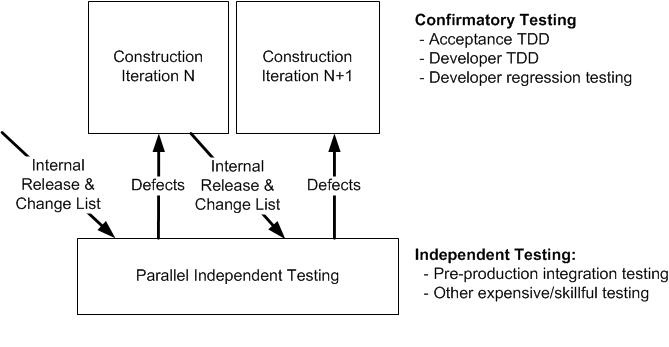
Figure 13. Parallel independent testing.
Important: The development team is still doing the
majority of the testing when an independent test team
exists. It is just that the independent test team is
doing forms of testing that either the development doesn't
(yet) have the skills to perform or is too expensive
for them to perform.
The independent test team reports defects back to
the development, indicated as "change stories"
inFigure 12 because being agile we tend to rename everything
;-) . These defects are treated as type of requirement
by the development team in that they're prioritized,
estimated, and put on the work item stack.
There are several reason why you should consider parallel
independent testing:
Investigative testing. Confirmatory testing approaches,
such as TDD, validate that you've implemented the requirements
as they've been described to you. But what happens when
requirements are missing? User stories, a favorite requirements
elicitation technique within the agile community, are
a great way to explore functional requirements but defects
surrounding non-functional requirements such as security,
usability, and performance have a tendency to be missed
via this approach.
Lack of resources. Furthermore, many development teams
may not have the resources required to perform effective
system integration testing, resources which from an
economic point of view must be shared across multiple
teams. The implication is that you will find that you
need an independent test team working in parallel to
the development team(s) which addresses these sorts
of issues. System integration tests often require expensive
environment that goes beyond what an individual project
team will have
Large or distributed teams. Large or distributed teams
are often subdivided into smaller teams, and when this
happens system integration testing of the overall system
can become complex enough that a separate team should
consider taking it on. In short, whole team testing
works well for agile in the small, but for more complex
systems andagile at scale you need to be more sophisticated.
Complex domains. When you have a very complex domain,
perhaps you're working on life critical software or
on financial derivative processing, whole team testing
approaches can prove insufficient. Having a parallel
independent testing effort can reduce these risks.
Complex technical environments. When you're working
with multiple technologies, legacy systems, or legacy
data sources the testing of your system can become very
difficult.
Regulatory compliance. Some regulations require you
to have an independent testing effort. My experience
is that the most efficient way to do so is to have it
work in parallel to the development team.
Production readiness testing. The system that you're
building must "play well" with the other systems
currently in production when your system is released.
To do this properly you must test against versions of
other systems which are currently under development,
implying that you need access to updated versions on
a regular basis. This is fairly straightforward in small
organizations, but if your organization has dozens,
if not hundreds of IT projects underway it becomes overwhelming
for individual development teams to gain such access.
A more efficient approach is to have an independent
test team be responsible for such enterprise-level system
integration testing.
Some agilists will claim that you don't need parallel
independent testing, and in simple situations this is
clearly true. The good news is that it's incredibly
easy to determine whether or not your independent testing
effort is providing value: simply compare the likely
impact of the defects/change stories being reported
with the cost of doing the independent testing.
3.4 Defect Management
Defect management is often much simpler on agile projects
when compared to classical/traditional projects for
two reasons. First, with awhole team approach to testing
when a defect is found it's typically fixed on the spot,
often by the person(s) who injected it in the first
place. In this case the entire defect management process
is at most a conversation between a few people. Second,
when anindependent test team is working in parallel
with the development team to validate their work they
typically use a defect reporting tool, such as IBM Rational
ClearQuest or Bugzilla, to inform the development team
of what they found. Disciplined agile delivery teams
combine theirrequirements management and defect management
strategies to simplify their overall change management
process. Figure 14 summarizes this (yes, it's the same
as Figure 6) showing how work items are worked on in
priority order. Both requirements and defect reports
are types of work items and are treated equally -- they're
estimated, prioritized, and put on the work item stack.
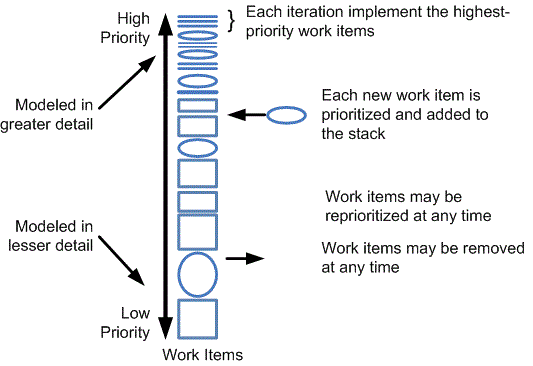
Figure 14. Agile defect change management
process.
This works because defects are just another type of
requirement. Defect X can be reworded into the requirement
"please fix X". Requirements are also a type
of defect, in effect a requirement is simply missing
functionality. In fact, some agile teams will even capture
requirements using a defect management tool, for example
theEclipse development team uses Bugzilla and theJazz
development team usesRational Team Concert (RTC).
The primary impediment to adopting this strategy, that
of treating requirements and defects as the same thing,
occurs when the agile delivery team finds itself in
a fixed-price or fixed estimate situation. In such situations
the customer typically needs to pay for new requirements
that weren't agreed to at the beginning of the project
but should not pay for fixing defects. In such situations
the bureaucratic approach would be to have two separate
change management processes and the pragmatic approach
would be to simply mark the work item as something that
needs to be paid extra for (or not). Naturally I favor
the pragmatic approach. If you find yourself in a fixed-price
situation you might be interested that I've written
a fair bit about this and more importantly alternatives
forfunding agile projects. To be blunt, I vacillate
between consideringfixed-price strategies are unethical
or simply a sign of grotesque incompetence on the part
of the organization insisting on it. Merging your requirements
and defect management processes into a single, simple
change management process is a wonderful opportunity
for process improvement. Exceptionally questionable
project funding strategies shouldn't prevent you from
taking advantage of this strategy.
3.5 End of Lifecycle Testing
An important part of the release effort for many agile
teams is end-of-lifecycle testing where an independent
test team validates that the system is ready to go into
production. If the independent parallel testing practice
has been adopted then end-of-lifecycle testing can be
very short as the issues have already been substantially
covered. As you see inFigure 15 the independent testing
efforts stretch into therelease phase(called the Transition
phase ofDisciplined Agile Delivery) of the delivery
life cycle because the independent test team will still
need to test the complete system once it's available.
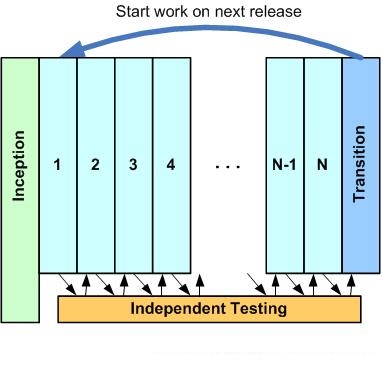
Figure 15. Independent testing throughout
the lifecycle.
There are several reasons why you still need to do
end-of-lifecycle testing:
It's professional to do so. You'll minimally want to
do one last run of all of your regression tests in order
to be in a position to officially declare that your
system is fully tested. This clearly would occur once
iteration N, the last construction iteration, finishes
(or would be the last thing you do in iteration N, don't
split hairs over stuff like that).
You may be legally obligated to do so. This is either
because of the contract that you have with the business
customer or due to regulatory compliance (many agile
teams find themselves in such situations, as theNovember
2009 State of the IT Union survey discovered).
Your stakeholders require it. Your stakeholders, particularly
your operations department, will likely require some
sort of testing effort before releasing your solution
into production in order to feel comfortable with the
quality of your work.
There is little publicly discussed in the mainstream
agile community about end-of-lifecycle testing, the
assumption of many people following mainstream agile
methods such as Scrum is that techniques such asTDD
are sufficient. This might be because much of the mainstream
agile literature focuses on small, co-located agile
development teams working on fairly straightforward
systems. But, when one or morescaling factors (such
as large team size, geographically distributed teams,
regulatory compliance, or complex domains) are applicable
then you need more sophisticated testing strategies.
Regardless of some of the rhetoric you may have heard
in public, as we see in the next section a fair number
of TDD practitioners are indicating otherwise in private.
3.6 Who is Doing This?
Figure 16 summarizes the results of one of the questions
fromAmbysoft’s 2008 Test Driven Development (TDD) Survey
which asked the TDD community which testing techniques
they were using in practice. Because this survey was
sent to the TDD community it doesn't accurately represent
the adoption rate of TDD at all, but what is interesting
is the fact that respondents clearly indicated that
they weren't only doing TDD (nor was everyone doing
TDD, surprisingly). Many were also doingreviews and
inspections,end of lifecycle testing, andparallel independent
testing, activities which the agile purists rarely seem
to discuss.
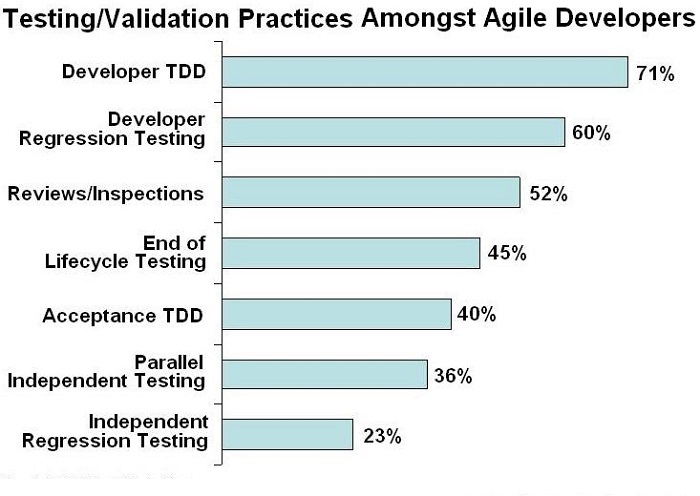
Figure 16. Testing/Validation practices
on agile teams.
Furthermore,Figure 17, which summarizes results from
the2010 How Agile Are You? survey, provides insight
into which validation strategies are being followed
by the teams claiming to be agile. I suspect that the
adoption rates reported for developer TDD and acceptance
TDD, 53% and 44% respectively, are much more realistic
than those reported inFigure 16.

Figure 17. How agile teams validate
their own work.
Figure 18 andFigure 19 summarize results from theAgile
Testing Survey 2012. These charts indicate the PRIMARY
approach to acceptance testing and developer testing
respectively. On the surface there are discrepancies
between the results shown inFigure 17 and those inFigure
18 andFigure 19. For example,Figure 17 shows an adoption
rate of 44% for ATDD but Figure 18 only shows a 9% rate.
This is because the questions where different. The 2010
survey asked if a team was following the practice whereas
the 2012 survey asked if it was the primary approach.
So, a team may be taking a test-first approach to acceptance
testing but other approaches may be more common, hence
ATTD wasn't the primary strategy for acceptance testing
on that team. When it comes to test-first approaches
it's clear that we still have a long way to go until
they dominate.
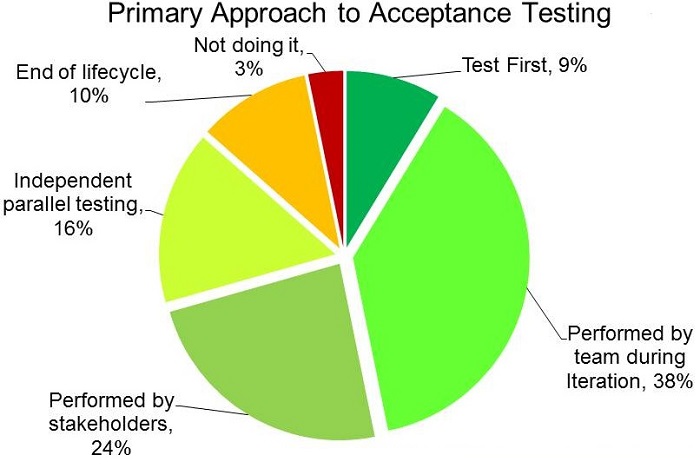
Figure 18. Primary approach to acceptance
testing.
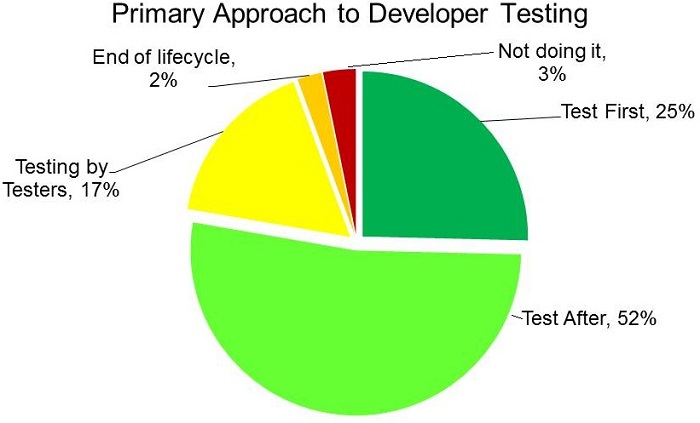
Figure 19. Primary approach to developer
testing.
3.7 Implications for Test Practitioners
There are several critical implications for existing
test professionals:
Become generalizing specialists. The implication ofwhole
team testing is that most existing test professionals
will need to be prepared to do more than just testing
if they want to be involved with agile projects. Yes,
the people onindependent test teams would still focus
solely on testing, but the need for people in this role
is much less than the need for people with testing skills
to be active members of agile delivery teams.
Be flexible. Agile teams take an iterative and collaborative
approach which embraces changing requirements. The implication
is that gone are the days of having adetailed requirements
speculation to work from, now anyone involved with testing
must be flexible enough to test throughout the entire
life cycle even when the requirements are changing.
Be prepared to work closely with developers. The majority
of the testing effort is performed by the agile delivery
team itself, not by independent testers.
Be flexible. This is worth repeating. ;-)
Focus on value-added activities. I've lost track of
the number of times I've heard test professionals lament
that there's never enough time nor resources allocated
to testing efforts. Yet, when I explore what these people
want to do, I find that they want to wait to have detailed
requirements speculations available to them, they want
to develop documents describing their test strategies,
they want to write detailed test plans, they want to
write detailed defect reports, and yes, they even want
to write and then run tests. No wonder they don't have
enough time to get all this work done! The true value
added activities which testers provide are finding and
then communicating potential defects to the people responsible
for fixing them. To do this they clearly need to create
and run tests, all the other activities that I listed
previously are ancillary at best to this effort. Waiting
for requirements speculations isn't testing. Writing
test strategies and plans aren't testing. Writing defect
reports might be of value, but there are better ways
to communicate information than writing documentation.
Agile strategies focus on the value-added activities
and minimize if not eliminate the bureaucratic waste
which is systemic in many organizations following classical/traditional
strategies.
Be flexible. This is really important. |